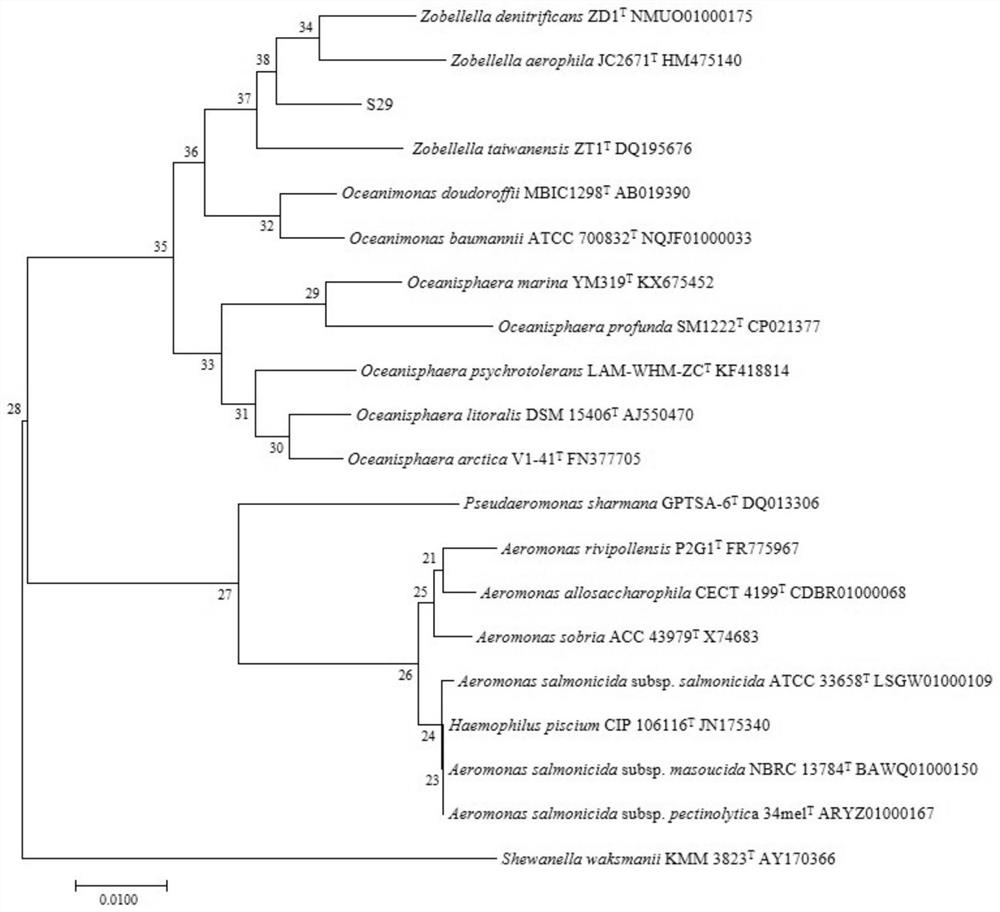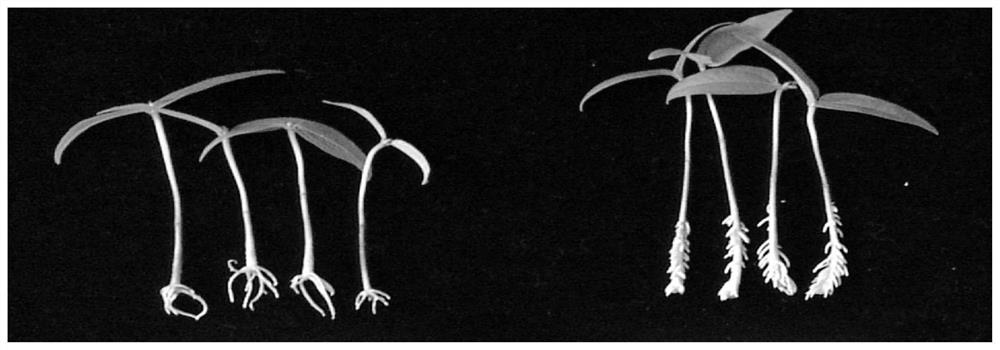A bacterium of the genus Zorbia and its application in improving plant stress resistance
A technology of Zurbacillus and Bacillus, applied in the field of microorganisms, can solve the problems of reduced activity of PEP carboxylase and RuBP carboxylase, enhanced photorespiration, etc.
- Summary
- Abstract
- Description
- Claims
- Application Information
AI Technical Summary
Problems solved by technology
Method used
Image
Examples
Embodiment 1
[0090] Example 1. Isolation, Identification and Preservation of Zobellella sp. DQSA1 CCTCC NO: M 2018587
[0091] 1. Isolation of bacterial DQSA1
[0092] 1. Add 10g of saline-alkali soil sample (collected from the saline-alkali grassland in Longfeng District, Daqing City, Heilongjiang Province, China) to 90mL of sterile water, shake at 28°C for 20min, let it stand for 10min, then take 1mL of the supernatant, add 9mL of Mix thoroughly in a sterile test tube in bacterial water (at this time, the dilution is recorded as 10 -1 ), then draw 1mL from this test tube and add it to another sterile test tube filled with 9mL sterile water and mix evenly, and so on to make 10 -2 、10 -3 Bacterial suspensions at different dilutions.
[0093] 2. After completing step 1, dilute 0.2mL to 10 -3 The bacterial suspension was uniformly spread on the improved S-G solid plate, and incubated at a constant temperature of 28°C for 7 days.
[0094] 3. After completing step 2, pick a single colony ...
Embodiment 2
[0118] Embodiment 2, Zorbeella genus DQSA1 can promote the rooting of mung bean cuttings
[0119] 1. Obtaining mung bean cuttings
[0120] (1) Select plump mung bean seeds and wash them with water for 2 hours.
[0121] (2) After completing the step (1), the mung bean seeds were taken, sterilized with 0.1% (v / v) sodium hypochlorite aqueous solution for 30 minutes, and then rinsed with sterile water for 10 minutes.
[0122] (3) After completing step (2), soak the mung bean seeds in sterile water for 12 hours, then sow them in sterile vermiculite, cultivate them in the dark at 27±2°C for 48 hours, and then cultivate them alternately in light and dark at 27±2°C 3d, get mung bean seedlings.
[0123] (4) After completing step (3), select mung bean seedlings whose growth, cotyledon size, and hypocotyl thickness are basically the same, and cut off the hypocotyl and root system below the cotyledon 4cm to obtain mung bean cuttings.
[0124] 2. Preparation of DQSA1 bacterial agent
...
Embodiment 3
[0134] Embodiment 3, the ability of saline-alkali stress resistance of corn and mung bean to be improved by Zorbeia genus DQSA1
[0135] The saline-alkali soil was collected in the saline-alkali grassland of Daqing City, Heilongjiang Province, China, with a pH value of 8.34, an alkalization degree of 34.28%, and a soluble salt content of 0.77%. The non-saline-alkali soil was collected from farmland in Datong District, Daqing City, Heilongjiang Province, China, with a pH value of 6.56, an alkalization degree of 7.60%, and a soluble salt content of 0.10%.
PUM
 Login to View More
Login to View More Abstract
Description
Claims
Application Information
 Login to View More
Login to View More - R&D
- Intellectual Property
- Life Sciences
- Materials
- Tech Scout
- Unparalleled Data Quality
- Higher Quality Content
- 60% Fewer Hallucinations
Browse by: Latest US Patents, China's latest patents, Technical Efficacy Thesaurus, Application Domain, Technology Topic, Popular Technical Reports.
© 2025 PatSnap. All rights reserved.Legal|Privacy policy|Modern Slavery Act Transparency Statement|Sitemap|About US| Contact US: help@patsnap.com



